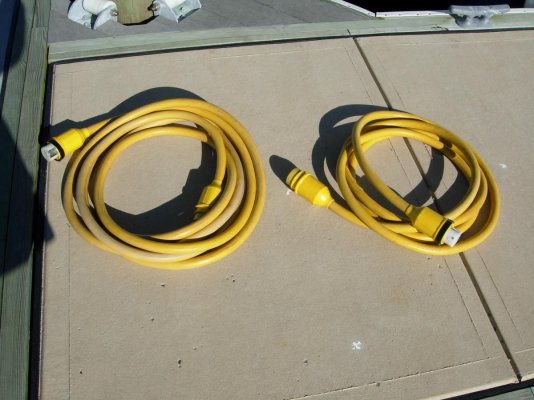If you are using a standard 30 amp cable, the normal store bought length is 50', which is light weight and easily manageable, so doesn't need to be shortened to 30' or 20'.
I have a couple of spares, so when necessary to dock in a location far from the nearest shore outlet, I have 150'. I have used this much only once, up coast.
After an insurance survey, the insurance Co. contributed $125 to the cost of putting a "smart Plug" on the boat end. This means I have no choice which of my 3 power cords is attached to the boat.
The connection to the boat is the most frequent source of boat fires, hence the insurance Co encouraging the use of a safer connector. Should the cord to post or cord to cord connection burn up, it won't take the boat with it, so no push by the insurance industry to change. Another thing insurers don't like is the DIY style connector that doesn't have the positive screw on security of the factory installed boat end. No surprise some marinas require this.
Like Marin, my connection point is close to mid-ship, but on the Starboard side. I prefer to tie Port side, so come over the foredeck to the nearest shore outlet, which at home port or club marinas, is always within the reach of my single 50' cord.


